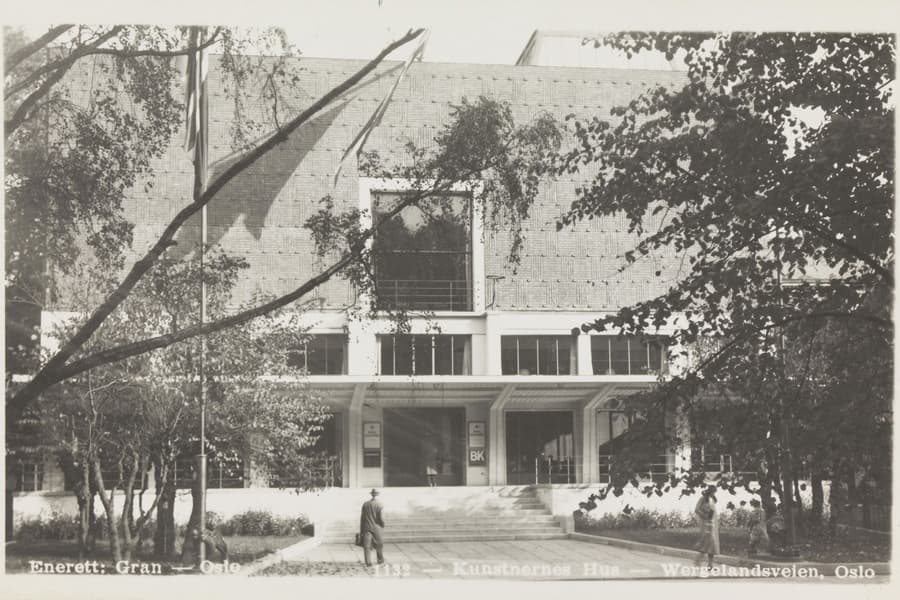William Kullgren
Memorial exhibit
William Kullgreen is perhaps a relatively unknown name to the art-interested public. This memorial exhibition organized by the painter's wife is also the first separate collection to be shown publicly in Oslo.
The fault for this situation does not lie with the art dealers or with the public, but is due to a peculiarity of the artist himself. As expressive and violent as William Kullgreen was in his art, he was just as introverted and nervous, fumbling with people. When some friends got together in 1959 to celebrate his 60th birthday, Kullgreen himself simply refused to be present.
But the hand that trembled when it was extended to another human being was firm and sure when it grasped the handle of the brush. Now the hand has let go, and the restless soul has found rest. William Kullgreen died aged 73 and he is finally excused from appearing in front of the public. His pictures can speak for him, and they speak well.
There are a total of 4 self-portraits included in this exhibition. Self-portraits which give a good expression of Kullgreen's strength as a painter, but which also give a revealing insight into how he saw himself and his task as an artist. Just look at the first self-portrait, painted when the artist was 20 years old. With the visionary ideality of youth, he looks into the future he will conquer. There is certainly no trembling or uncertainty here, let alone any modesty or lack of faith in one's task. Incidentally, one finds in the later self-portraits something of the same self-confidence, not on behalf of oneself, but on behalf of the art.
He also once said to another Haldenser: "Don't you know that we artists are the eyes of the world?".
The Norwegian visual arts of the 1930s belong to a strong period in our art history. The young painters were usually both strongly involved in society and expressionistic in their form, but these young Rabulists were kept in check by the discipline and discipline they had acquired through encounters with French art.
Already in his 20s, William Kullgreen became a pupil of the French painters André Lhote, Othon Friesz and Aroujo. He adopted Cubism's methods for pictorial construction, but in his color language he remained Norwegian and emotional.
At the exhibition you can experience the highlights of a long and active artist's life. The superb spatial art of the decorative tasks, the beautiful variations over the plasticity of the female body, and the color spectrum of the light over the landscape and people.
Let me draw attention to "Rhythm" from 1969. Here William Kullgreen's best qualities as an artist are gathered together in a bundle. The clear color scheme and the virtuoso play of lines — everything held together in a tight construction as in a medieval stained glass window.
Victor Sparre


